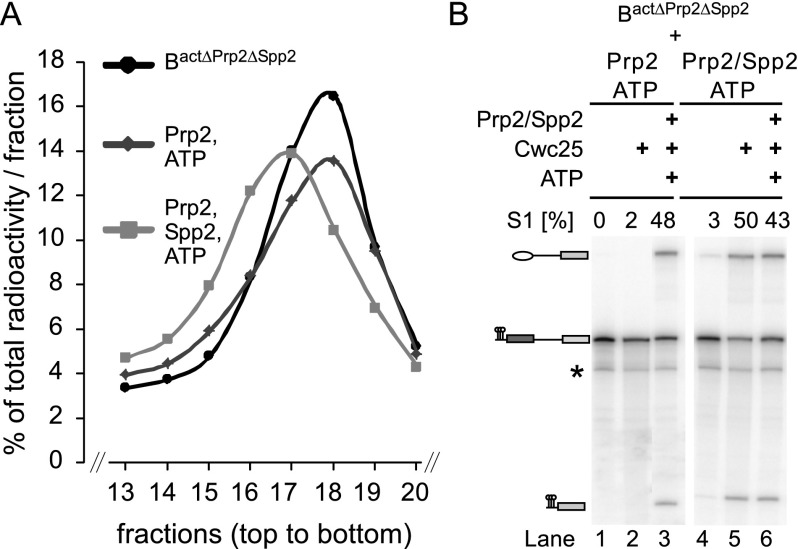Figure 3.
Spp2 is required for Prp2-catalyzed NTP-dependent remodeling of the Bact spliceosome. (A) Glycerol gradient sedimentation profiles of Act-wt Bact ΔPrp2 ΔSpp2 spliceosomes incubated with buffer alone (black) or in the presence of Prp2 and ATP in either the absence (dark gray) or presence (light gray) of Spp2. Radioactivity contained in each fraction was determined by Cherenkov counting and calculated as the percentage of total radioactivity in one gradient. The percentage of total radioactivity present in each gradient fraction is plotted. Ten percent to 30% (v/v) glycerol gradients containing 75 mM KCl were loaded with 400-µL samples and centrifuged at 60,000 rpm for 2 h in a TH660 rotor (Sorvall). (B) The Bact ΔPrp2 ΔSpp2 spliceosomes complemented with Prp2/ATP or Prp2/Spp2/ATP were recovered from the peak fractions of the glycerol gradients shown in A and then incubated for 1 h at 23°C under reconstitution conditions with buffer (lanes 1,4), Cwc25 (lanes 2,5), or Prp2, Spp2, Cwc25, and ATP (lanes 3,6, positive controls). Thus, in lanes 4–6, spliceosomes that had been catalytically activated during the preincubation step were used. The formation of step 1 splicing products was monitored by 8% denaturing RNA PAGE and quantified by a PhosphorImager. The percentage of step 1 (S1) products (compared with the total RNA signal in a lane) is indicated above each lane. RNA species are indicated at the left (from the top): lariat–intron–3′ exon, pre-mRNA, uncharacterized RNA species, and 5′ exon.

